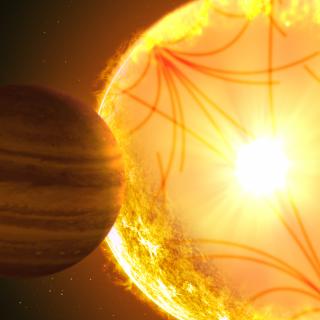Bibcode
Deeg, H. J.; Alonso, R.
Bibliographical reference
Contributions of the Astronomical Observatory Skalnate Pleso
Advertised on:
2
2024
Citations
0
Refereed citations
0
Description
Detections of transiting planets from the upcoming PLATO mission are expected to face significant contamination from contaminating eclipsing binaries, resulting in false positives. To counter this, a ground-based programme to acquire time-critical photometry is pursued. Its principal aim is to obtain time-series observations of the planet candidate and its surrounding stars at the times of expected transits. This programme is part of the PLATO Ground-based Observations Programme, which also covers spectroscopic and imaging observations. The current photometric follow-up programme is assembling the required observational resources, executing benchmark observations, and defining strategies for the observations and their reporting. Post-launch, it will focus on coordinating photometric data collection and analysis, and will update candidate statuses in the PLATO follow-up database. Its work packages are outlined, covering specific tools, citizen contributions, standard and multi-colour observations, secondary eclipses, and reprocessing of archival photometry. Ground-based follow-up photometry will likely concentrate on longer-period candidates, given that false positives of short-period candidates will likely become identifiable in timeseries available from GAIA in the near future. Geographical considerations for follow-up observations from the first PLATO long-observation field LOPS2 are outlined, which lies in the southern hemisphere, with later fields expected to be more suitable for northern observers.
Related projects

Helio and Astero-Seismology and Exoplanets Search
The principal objectives of this project are: 1) to study the structure and dynamics of the solar interior, 2) to extend this study to other stars, 3) to search for extrasolar planets using photometric methods (primarily by transits of their host stars) and their characterization (using radial velocity information) and 4) the study of the planetary
Savita
Mathur

Exoplanets and Astrobiology
The search for life in the universe has been driven by recent discoveries of planets around other stars (known as exoplanets), becoming one of the most active fields in modern astrophysics. The growing number of new exoplanets discovered in recent years and the recent advance on the study of their atmospheres are not only providing new valuable
Enric
Pallé Bago